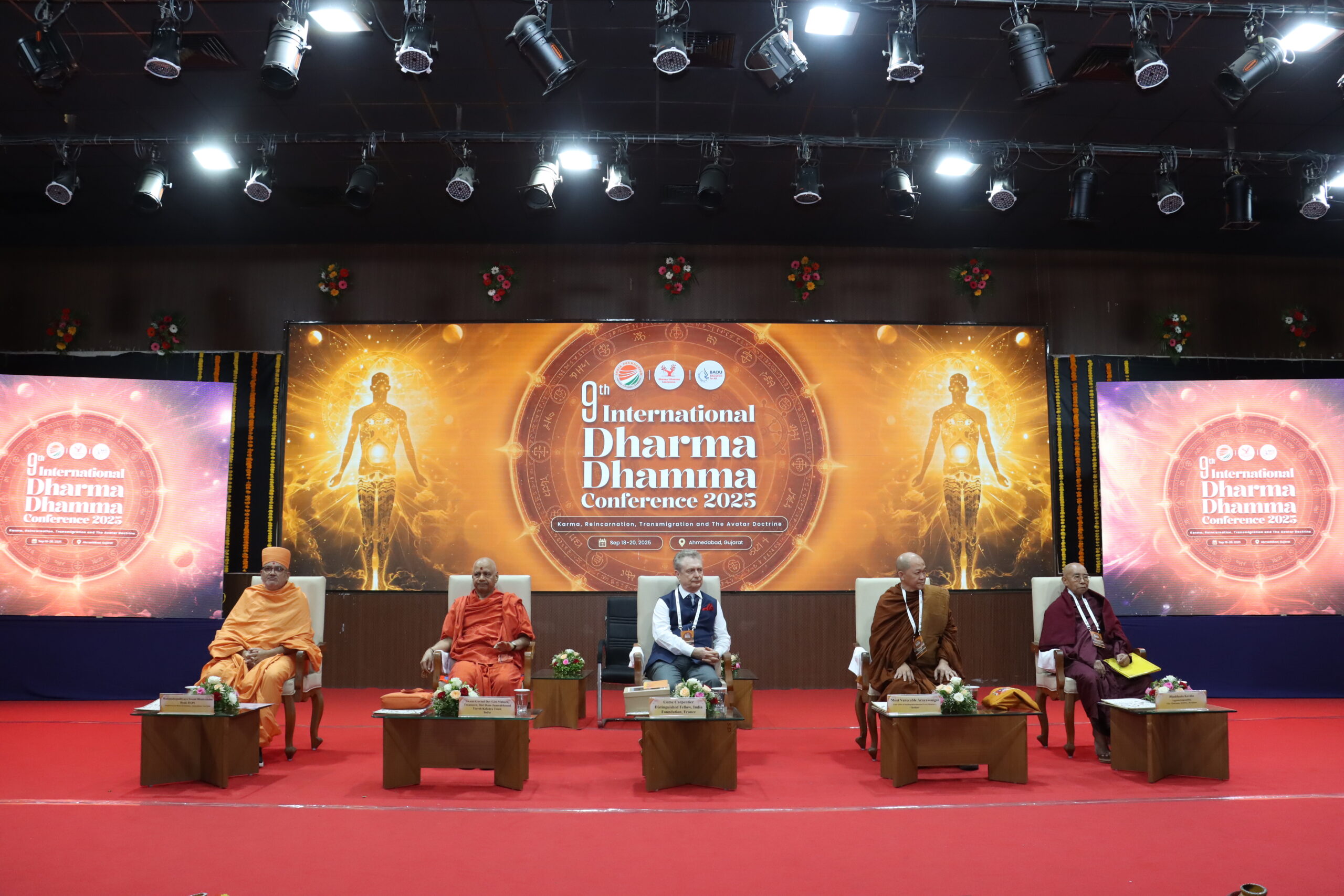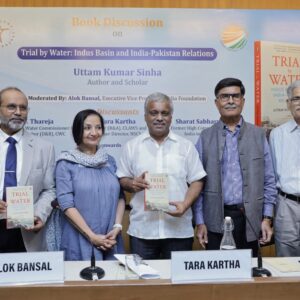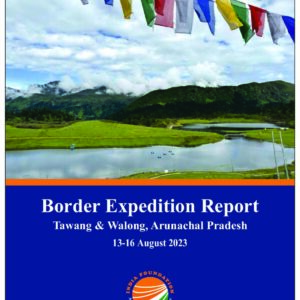~ By Dr. S.Y. Quraishi
On November 26, we celebrate the Constitution Day. On this day in 1949, our Constitution was adopted.It was promulgated on 26th January 1950. On 26th November 1949, six articles of the constitution regarding the election commission were also promulgated. Initially they were differently numbered from 289 to 295; later on they became Articles 324 to 329. The Election Commission of India was born on 25th January, 1950, i.e, a day before India was born as a Republic. That is the importance framers of the constitution gave to elections.
One Nation, One Election is a very beautiful concept. We have been talking about it as simultaneous election. When Prime Minister Modi on 19th March 2016 was addressing party workers, he talked about it. Media went to town saying he floated the idea. Actually he had not floated the idea, but had only flagged the idea, which has been known for a long time.
The Prime Minister talked about the cost – Rs.30,000 crores – asbeing spent by political parties. Rs.4,500 crores is spent by Election Commission on election management. This also actually does not reflect the entire cost because many of the costs are hidden. For example, the 1,10,00,000 people who conduct the elections for ECI – their salary is not calculated. Their TA, DA comes from their normal budget, it is not calculated. Only the extra costs, i.e., the honorarium ECI gives, the machines, stationary, movement, logistics – those are the costs which are included.
Second, the Prime Minister mentioned that there is work paralysis, which is largely true. And then he talked about saving the party workers’ time because party workers were spending too much time and money in electioneering. He also talked about holding simultaneous elections at all three levels – Panchayats i.e, local bodies, states and parliament.
PM Modi only flagged issues, which have been there for sometime. Law Commission, as far back as in 1999, had recommended in detail that staggered elections are very cumbersome, that they are creating problems and that there should be simultaneous elections. L.K.Advani was a strong proponent of it. In a blog in May 2010, he strongly recommended that there should be simultaneous elections and he also offered a solution saying no-confidence motion must also accompanied by a confidence motion. BJP manifesto itself in 2014, talked about simultaneous elections. ECI in 2015, when asked to give its comments to Parliamentary Committee, suggested that it was a very good idea if there is consensus and legal and constitutional amendments are taken place. And Parliamentary Committee on 17th December 2015 came out with recommendation. So, it has a long history.
Mr. Vasanth Sathe (of Congress) had recommended it for decades. This concern has been voiced by all political parties at different times. Therefore, it should not be coloured by any political considerations. It is a general concern and it has to be taken in that spirit.
Parliamentary standing committee in its 79th report talked about massive expenditure on separate elections. It says model code of conduct leads to policy paralysis. Delivery of essential services is adversely affected. Burdenof deployment of large manpower on election management disrupts normal functioning of offices. All four concerns very correct. One more reason that is being missed is the scourge of casteism and communalism. Because of elections, people who do not know their caste or have nothing to do with it are reminded of their sub-sub-sub caste. Vote bank politics perpetuates the caste system. Communalism and polarization are happening because we are perpetually in election mode. After elections, things become very normal and peaceful.
The otherreason in favour of simultaneous elections is the matter of freebies – free bicycles, free laptops, free TVs, etc. All political parties are agitated. But they do it because it is a very competitive environment. One party spends money, because the other party is spending money. One party gives ticket to a criminal, because rival party is giving ticket to a criminal and therefore they have to put a bigger criminal. Now it becomes the level playing field of the rich and the criminal. This is a vitiation of the electoral process, which was not intended.
Root-cause of all corruption in the country is electoral corruption. When crores are spent, crores are to be collected. Everybody knows how they are collected. Because of frequent elections, corruption gets perpetuated.80% fund collection by political parties is cash collection, and that is very dubious. Whether cash comes from liquor mafia, real estate mafia or is it foreign money, we do not know. At this time of demonetization, it is also a great opportunity for electoral reforms. If electoral reforms happen, it would be very good fall-out of demonetization.
There are some counter points as well. Because of model code of conduct, every service is paralyzed is an exaggeration. All that ECI disallows is new policies. What stops the governments from announcing new policies in four years and eleven months? Why all the bright ideas come only on the eve of elections? That is ECI’s only objection. Everything ongoing must continue.
Governments may not like to work in normal times. But, the moment elections are announced, political parties start sending all the files to election commission whether it is coal allocation or steel plant or something. ECI is flooded with files. ECI only says, no new announcement will be done, which would seduce the voter. That is all. But is it true that since ministers go out for three months campaigning, minister’s office is closed and work stops. Since entire district machinery, DM, SP and down the line is involved in election related works, normal work comes to a standstill.
I am not in favour of painting election commission as an obstructionist. Once I got a call from Cabinet Secretary, when Shri Pranab Mukherjee was the Finance Minister, saying they want to increase MP land scheme from Rs. 2 crores to 5 crores a year. The expenditure would be 8,500 crores. I was strolling in my lawn. We had five elections – Tamil Nadu and others. I said, go ahead. There is no problem except that the matter has to be kept it in abeyance in these five states. Within half an hour, the Finance Minster announced this scheme quoting the conversation saying he had spoken to Quraishi and Quraishi had allowed except in these five states. If Rs. 8,500 crore decision can be taken in telephone in 30 seconds, to say that ECI stops work, is not true. But it is true that in the field, things do come to a standstill.
There was a case with regard to disruption of schools because of elections in Delhi.The matter had gone up to the Delhi High Court in 2007. The High Court ruled that teachers cannot be deployed. That would have upset election management totally. ECI went to Supreme Court and Supreme Court said teachers will have to be deployed because without them elections would not be possible. At the same time SC said there should be guidelines so that work of the schools does not get disrupted. So, if there is a single teacher school, ECI would not disturb.
ECI gives election timings in such a way that in March there are never any elections. There are lots of things in place to ensure that there is minimum dislocation. Article 324 (6) says that the President of India and Governor of the states would provide Election Commission of India with whatever staff they may require. And law requires elections to be managed only by government servants. So, where does ECI gets the staff from? After Right to Education Act, teachers were debarred from doing any other thing except election and census work. Census come once in 10 years and elections come more frequently and that is why it is in limelight.
Why are simultaneous elections not feasible? What is holding it back? The terms of Lok Sabha and Vidhana Sabhas do not coincide. 7 out of 16 Lok Sabhas were prematurely dissolved in 1969, 1971, 1980, 1984, 1996, 1998, and 1999. Legislatures lately have been completing their terms because of the anti-defection act and Supreme Court coming down heavily on misuse of article 356 in SR Bommai case in 1994. Because of this coalition era, this uncertainty and certainty would continue. Unfortunately coalition era has come to stay. The current government is an exception. After 25 years, we have a government with clear majority. Otherwise for the last 25 years, it was government with 20, 25, 30 parties. Apparently, that will continue because regional parties are becoming stronger by the day. What is the safeguard that coalition would not break down? Vajpayee government fell down in 13 days. There is also instance of his government losing the confidence motion by just one vote.
There are many arguments against simultaneous elections and in favour of the continuation of the present system. It makes the politicians accountable. It keeps them on toes. Politicians who meet the people only during elections do not remember the promises made to voters. If they are to meet people more frequently because of frequent elections, they may not forget the promises. When Rs. 30,000 crores come into circulation, there is creation of many temporary jobs like painters, transporters etc. Money circulation is good for economy.
Election commission banned defacement of public and private properties. After 10 pm, loud speakers will have to go off. There used to be 500 – 1,000 vehicles in processions. ECI stopped all that. Only 10 vehicles would move in convoy. When ECI banned moving of 500 vehicles, how much of petrol are we saving? How much of pollution and traffic jam we have safe guarded against? ECI also banned use of plastic. Many criticize that ECI has killed the festival of democracy. But voters love ECI discipline. Voters’ participation in elections is the index of festival of democracy. ECI had started voters education division. Some criticized saying educating voters is not the job of Election Commission, but only conducting elections. But it is very much the job of ECI. Legitimacy of our politicians comes from the legitimacy of our election process.
In our country people who lose vote by one vote also trust the legitimacy of elections. CP Joshi lost elections by one vote. He called returning officers to request for recounting of postal ballots, which was done. Second time, he requesting for physical tallying of votes total, which was also done. Third time he called to thank the returning officer for conceding to requests and saying the process was very legitimate. The side story is that his wife did not vote in those elections. His wife and daughter went to temple to pray. The lessons are – every vote counts, you cannot take family for granted. On the day of polling, the most important temple is the polling station. He was a potential contender for chief minister-ship and later he won parliamentary elections and became a minster at the centre.
Our electoral system is healthier than Americans. Hillary Clinton had said that Indian election is a global gold standard.
There is another benefit of staggered election to law and order. Six months before elections,ECI enquires all DMs and SPS about pendency of non-bailable warrants. ECI asks them to bring it down to zero. ECI ensures catching hold of illegal arms and ammunition, also asks for deposit of legal arms. Lowest crime rate is ensured in the election period.
Local and national issues get separated. It may not be true to think simultaneous elections would be of benefit to national parties, it can also be a loss to them. Clouding of local sentiments with national sentiments may be counter-productive and that needs to be analysed.
Niti Aayog had come out with a document listing the pros and cons of simultaneous elections, and it is a good document to take the discussion forward.
Prime Minister was talking about simultaneous elections at all three levels. But many normally forget the Panchayat elections while discussing the idea. I went as an election observer to Kenya, where seven elections were happening simultaneously.
What was there in the minds of the framers of the constitution? They visualized simultaneous elections. They discussed the role of the Election Commission. They thought of part-time election commissioner. They grudgingly gave one fulltime election commissioner. Within eight years, mid-term elections came in Kerala as the government fell. Vision of simultaneous elections had broken. In 1971,many state legislative assemblies were dissolved and elections had to be held.
What is the stand of election commission? ECI said it would be happiest if there are simultaneous elections. Media gets so much TRP ratings and business during elections. Now elections are stretched for as much as three months. Election commission and political parties would be happy if they are completed at one go. Election Commission said simultaneous elections are a good idea so long as political parties agree, which is the crux. Logistical challenges like requirement of too many EVMs would be there.
People criticize holding elections in seven or nine phases. But election commission doesn’t want loss of lives and takes adequate security measures to protect law and order. Bihar CM Nitish Kumar said that if needed, we must hold elections in 10 phases but deploy para military forces. That statement is very significant, which means that the chief minister of a state did not trust his own police. He expects police to come from outside. Because it is a reality, that state police has become police of some particular leaders rather than police of the state. Central forces are limited. Hard bargaining happens for deployment of forces. Forces are drawn from border areas and from terror affected areas. Such deployment increases the forces by one or two lakhs. Para military forces also supplement army. If adequate security forces are available, we can complete election processes by reducing the number of phases.
Parliamentary standing committee did not talk about Panchayat elections, which meant surrendering of 1/3rd of the formula. But any benefit – even simultaneous elections at two levels – is a good benefit. Niti Ayog had suggested onetime curtailment of tenure of some state legislative assemblies and enhancement of tenures of some. The suggestion is very worthwhile.
Advani’s suggestion of having a confidence motion along with no-confidence motion is not feasible. Normally the opportunity to form government comes to the next largest party after the ruling party. Hypothetically assuming there is a no-confidence motion against BJP government at present, the next largest party is one with just 44 seats. Legally and constitutionally, it would be unfeasible. It would account for cheating the voters. The party, which was rejected by voters,cannot be given power by the Lok Sabha.
There is a need for constituting a think tank to evolve a road map to conduct simultaneous elections, to evolve a formula that can muster consensus of all parties. There is no ceiling on expenditure by political parties. There is ceiling only on expenditure by candidates. There is a need for ceiling on both – expenditure by candidates as well as expenditure by political parties so that there can be a level playing field. Also, if adequate security forces are made available, election process can be completed in shorter duration of time. The concern of large scale expenditure of money and time can be addressed to some extent by these steps.
(This article is the summary of the key-note address made by Dr. S.Y. Quraishi, former Chief Election Commissioner of India at the symposium on ‘One Nation, One Election’ jointly organized by India Foundation and Nehru Memorial Museum and Library on 26th November, 2016)



